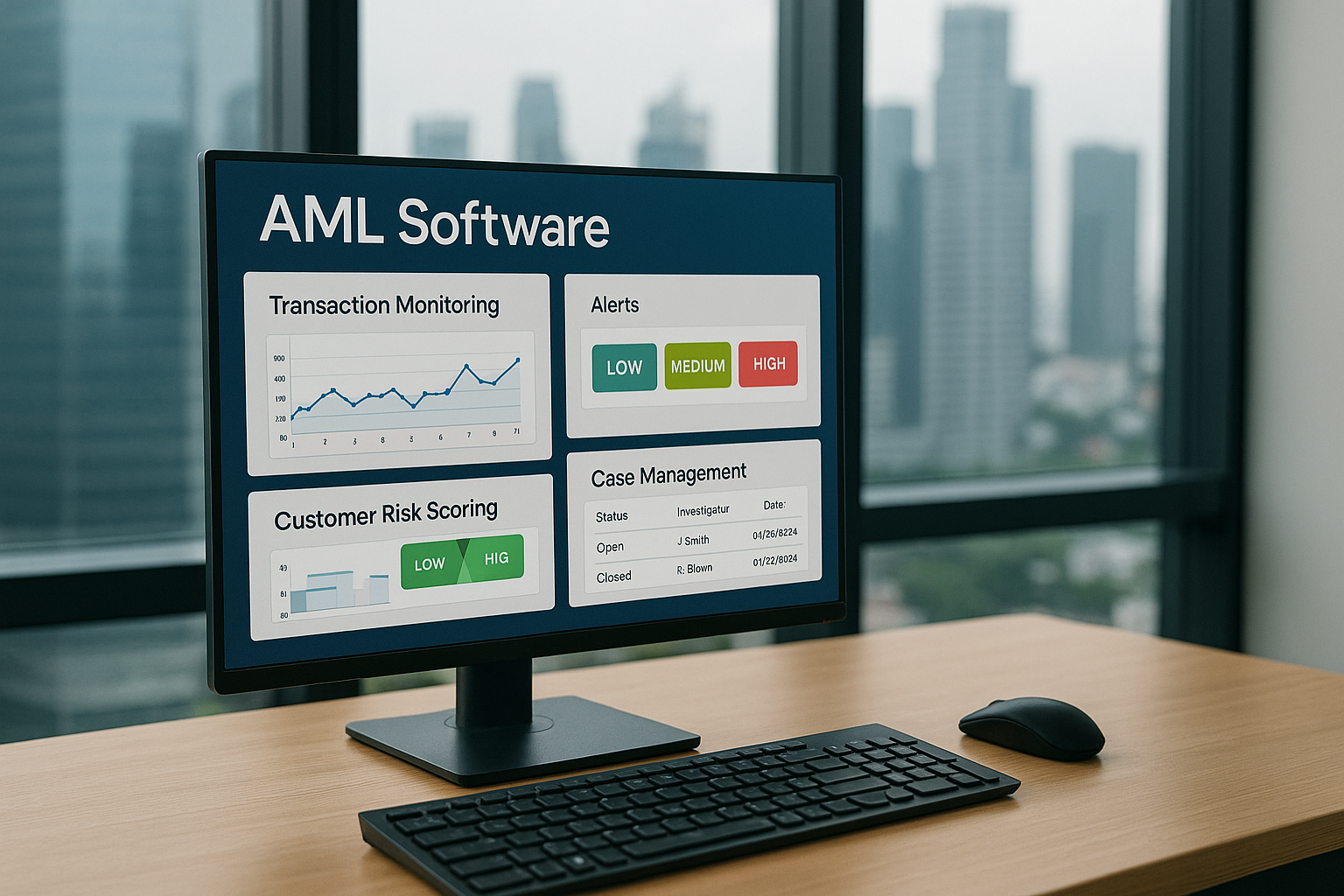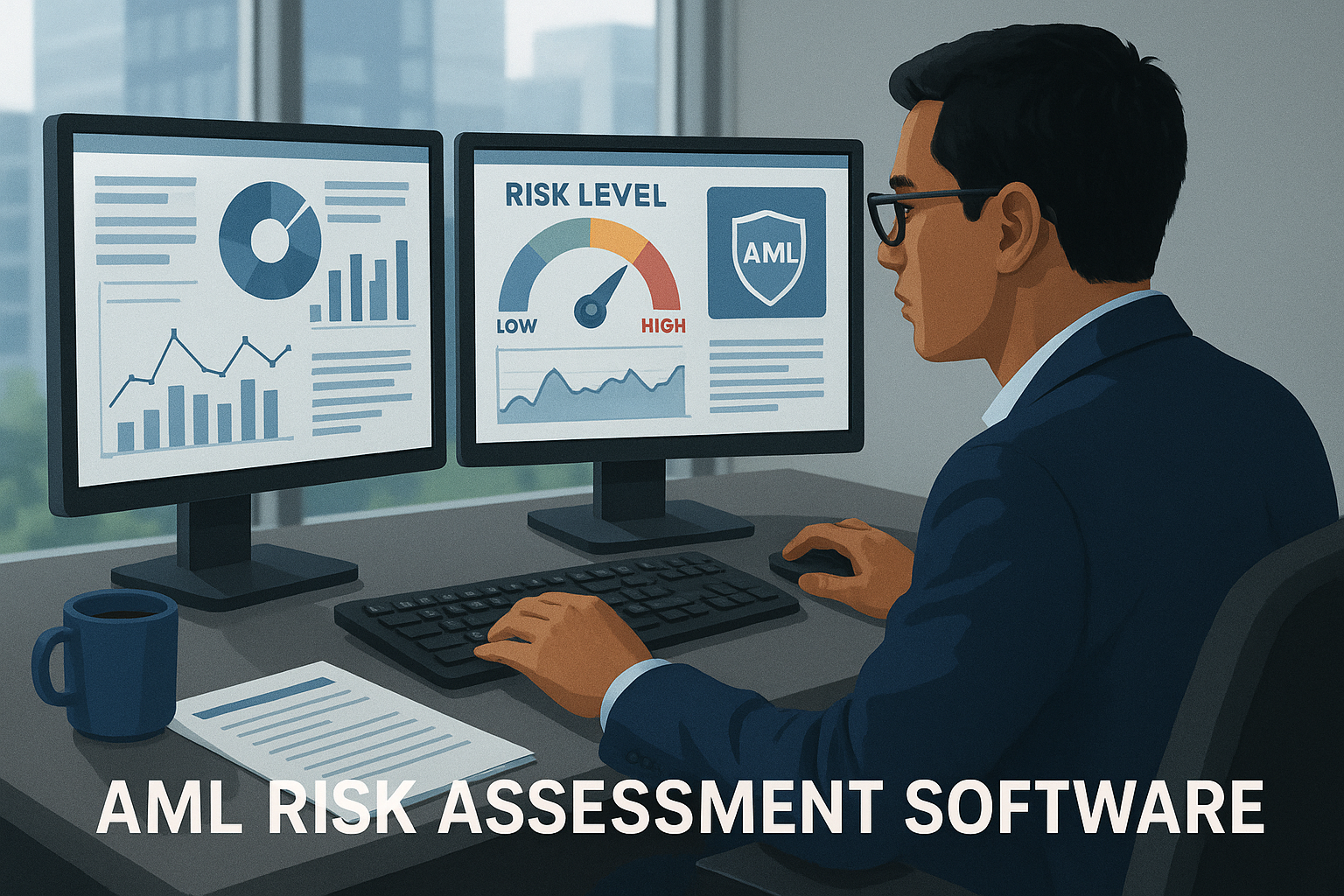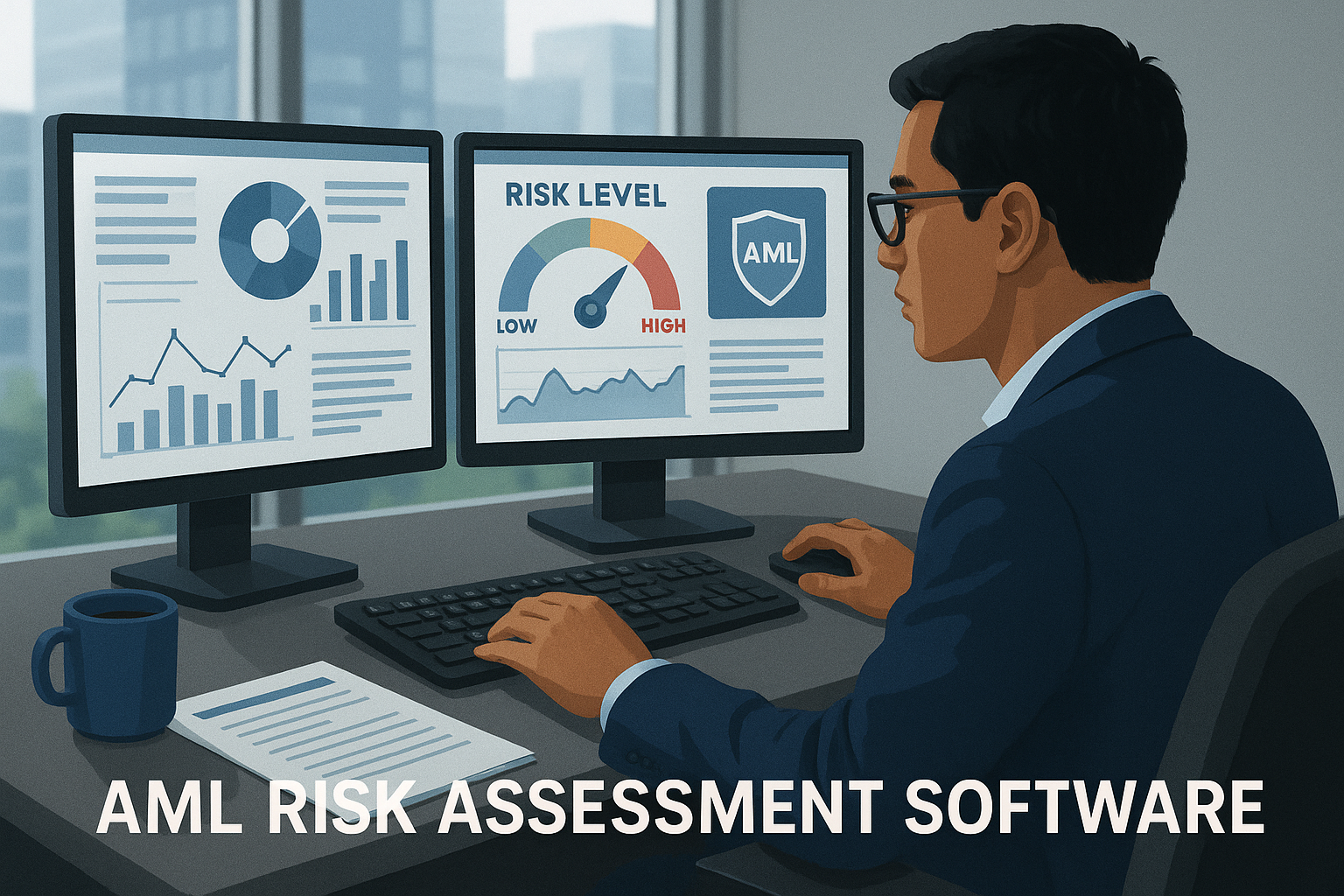Understanding Online Fraud: Prevention Techniques for Professionals
.svg)
In the digital age, the rise of online transactions has brought about unparalleled convenience and connectivity. However, this advancement has also paved the way for a surge in online fraud, posing significant challenges to anti-financial crime professionals across the globe. From phishing scams to sophisticated financial malware, the techniques used by fraudsters have evolved, becoming more complex and harder to detect.
For financial institutions, particularly in regions like Southeast Asia, the Middle East, and Africa, where digital adoption is rapidly growing, the threat of online fraud is not just a fleeting concern—it's an ongoing battle. Compliance professionals in these regions need to stay one step ahead, understanding the intricacies of online fraud and implementing robust prevention strategies to safeguard their operations.
This blog aims to demystify online fraud, exploring its mechanics, types, and the best practices for prevention. We will also delve into the role of technology and specific solutions like Tookitaki in enhancing fraud prevention frameworks. Our goal is to equip AML compliance professionals with the knowledge and tools necessary to combat online fraud effectively.
What is Online Fraud?
Online fraud, often synonymous with internet fraud, refers to any form of fraudulent activity that utilizes the internet as its main medium. It encompasses a wide range of illegal and deceitful actions designed to deceive individuals or organizations, often leading to financial loss or unauthorized access to confidential data. With the proliferation of digital platforms, online fraud has become a major concern for financial institutions, necessitating vigilant monitoring and proactive compliance measures.
{{cta-first}}
Characteristics of Online Fraud:
- Deceptive: At its core, online fraud involves deception. Fraudsters use misleading information to trick victims into parting with their money, personal information, or both.
- Technology-driven: Online fraudsters exploit various technologies such as email, websites, and social media platforms to execute their schemes.
- Anonymous: The internet provides a veil of anonymity, making it easier for criminals to hide their true identities and locations, complicating the efforts of law enforcement and compliance professionals.
Common Channels for Online Fraud:
- Email (Phishing): Fraudsters send emails that appear to be from reputable sources to steal sensitive information like login credentials and credit card numbers.
- Websites (Fake or Compromised Websites): These websites mimic legitimate ones or are legitimate sites that have been hacked to capture personal information or distribute malware.
- Social Media: Scammers use fake profiles or hijack existing accounts to conduct scams, including romance scams and fake charity drives.
Online fraud can target anyone, from individual consumers to large corporations, making it a pervasive threat across all sectors of the economy. For compliance professionals, understanding these basic elements of online fraud is crucial in developing effective strategies to combat it.
How Does Online Fraud Work?
Understanding the mechanics of online fraud is essential for compliance professionals who are tasked with safeguarding their institutions against these threats. Online fraud operates through a sequence of steps, each designed to breach security protocols and manipulate human vulnerabilities. Here's a breakdown of the typical stages of online fraud:
1. Target Identification
Fraudsters begin by identifying potential targets based on their vulnerability, value, or both. This can include individuals with high credit limits, businesses with substantial financial reserves, or systems known for security weaknesses.
2. Information Gathering
Once a target is chosen, fraudsters gather necessary information to execute their scams. This can be done through hacking, phishing, or social engineering tactics. The information collected often includes personal details, login credentials, or internal knowledge about a company’s processes.
3. Engagement
With sufficient information in hand, scammers engage with the target. This could be through direct communication like emails or phone calls, or indirectly by luring targets to compromised websites or fake online platforms.
4. Execution
This is the stage where the actual fraud occurs. Depending on the scam, it might involve unauthorized transactions, the creation of fraudulent accounts, or the unauthorized acquisition and use of confidential data.
5. Extraction
After successfully executing the fraud, the criminal extracts the financial gains, which may involve transferring stolen funds to untraceable accounts or converting stolen data into financial assets.
6. Covering Tracks
The final stage involves covering their tracks to avoid detection. This might include deleting digital footprints, using proxies to hide IP addresses, and employing money laundering techniques to obscure the origins of stolen funds.
Real-World Example: Phishing Attack
A common method of online fraud is a phishing attack, where fraudsters send emails pretending to be from a legitimate institution to induce individuals to reveal personal information. The email might contain a link that directs the user to a fraudulent website where personal details like passwords and credit card information are harvested.
Each of these stages requires a sophisticated understanding of both technology and human psychology, making online fraud a complex and challenging issue for compliance teams. The dynamic nature of these threats requires equally dynamic prevention and response strategies.
Types of Online Fraud
Online fraud manifests in various forms, each with unique tactics and targets. Understanding these types can help AML compliance professionals better anticipate and mitigate potential threats. Here are some of the most prevalent types of online fraud:
1. Phishing
Phishing involves fraudsters impersonating legitimate organizations via email, text messages, or social media to steal sensitive data. These messages often contain links to fake websites where unsuspecting victims enter personal information.
2. Identity Theft
Identity theft occurs when fraudsters obtain enough personal information to impersonate individuals and gain access to their financial accounts, apply for loans, or make purchases. This data can be sourced through data breaches, phishing, or malware.
3. Payment Fraud
This includes any fraudulent transaction where a fraudster uses stolen payment card details to make unauthorized purchases or withdrawals. It often involves credit card skimming, data breaches, or intercepting online transactions.
4. Advance-Fee Fraud
Victims are persuaded to make advance payments for goods, services, or benefits that do not materialize. Common examples include lottery scams and job offer scams, where victims pay upfront fees for opportunities that are fictitious.
5. Investment Fraud
These scams involve the promotion of fake investment opportunities, enticing victims with the promise of high returns. Ponzi schemes and pyramid schemes are typical examples of investment fraud.
6. Ransomware and Malware
Malware, including ransomware, is used to gain unauthorized access to a victim's computer. Once installed, it can lock a user’s files (ransomware) or log keystrokes to steal credentials (spyware).
7. Romance Scams
Fraudsters create fake profiles on dating sites or social media platforms to manipulate and steal money from individuals looking for romantic partners. These scams often involve long-term deceit to build trust before asking for money.
8. Business Email Compromise (BEC)
In BEC scams, fraudsters target companies with emails that mimic communications from executives or high-level employees. The objective is to deceive staff into transferring money or sensitive information to the scammer’s accounts.
Each type of fraud presents specific challenges that require tailored strategies for detection and prevention. Awareness and education are key components in defending against these threats, along with technological solutions that can detect and respond to fraudulent activities swiftly.
How to Protect Against Online Fraud
Protecting against online fraud is a multi-faceted approach that combines technology, education, and vigilance. For anti-financial crime compliance professionals, crafting an effective defense strategy involves understanding the tools and practices that can mitigate risks. Here’s how institutions can shield themselves and their clients from online fraud:
1. Educate and Train Staff and Clients
Awareness is the first line of defense against fraud. Regular training sessions for employees on recognizing phishing attempts, suspicious activities, and security protocols are essential. Similarly, educating clients on the risks and signs of fraud can empower them to be vigilant.
2. Implement Strong Authentication Processes
Strong authentication mechanisms such as two-factor authentication (2FA), biometric verification, and complex password requirements can significantly reduce the risk of unauthorized access to accounts and sensitive information.
3. Use Advanced Fraud Detection Systems
Investing in advanced fraud detection technologies that utilize machine learning and artificial intelligence can help identify and block fraudulent activities before they cause harm. These systems learn from patterns of normal and suspicious behaviours to improve their detection capabilities over time.
4. Secure and Monitor Networks
Ensuring that all network connections are secure, using encryption for data transmission, and employing firewalls and antivirus software are crucial in protecting against cyber threats. Continuous monitoring of network activities can also quickly uncover any unusual or potentially fraudulent actions.
5. Maintain Up-to-Date Software
Cyber threats evolve rapidly, and so must our defences. Regularly updating software, operating systems, and applications with the latest security patches can close vulnerabilities that could be exploited by fraudsters.
6. Develop Comprehensive Incident Response Plans
Having a well-defined incident response plan ensures that an organization can react swiftly and effectively in the event of a fraud incident. This plan should include procedures for isolating affected systems, conducting forensic investigations, and notifying affected clients and authorities.
7. Leverage Information Sharing Platforms
Participating in forums and networks where organizations share information about fraud trends and attacks can provide early warnings about new types of fraud and effective prevention strategies.
8. Regular Audits and Compliance Checks
Regular audits of financial and IT systems can help identify and mitigate vulnerabilities before they are exploited. Compliance checks ensure that all protective measures align with local and international AML regulations.
These protective measures form a robust framework that can help AML compliance professionals effectively manage and mitigate the risks associated with online fraud. By integrating these practices, financial institutions can enhance their security posture and protect their integrity and the assets of their clients.
{{cta-ebook}}
Fraud Prevention with Tookitaki
Tookitaki stands as a paradigm of innovation in the realm of Anti-Money Laundering (AML) and fraud prevention, particularly within emerging markets such as Southeast Asia, the Middle East, and Africa. By harmonizing advanced technology with a deep understanding of the compliance landscape, Tookitaki offers solutions that are not only effective but also scalable and proactive in combating financial crimes. Here’s how Tookitaki sets itself apart in the fight against online fraud:
1. Comprehensive Risk Coverage through Collective Intelligence
Tookitaki’s Anti-Financial Crime (AFC) Ecosystem harnesses the power of collective intelligence by bringing together a network of financial crime experts and institutions. This collaborative environment enables the sharing and updating of complex fraud scenarios in real-time, ensuring that all participants benefit from the most current and comprehensive risk assessments possible.
2. Machine Learning-Enhanced Detection
Utilizing sophisticated machine learning algorithms, Tookitaki's solutions can detect subtle patterns and anomalies that may indicate fraudulent activity. The system continually learns and adapts to new data, improving its predictive capabilities over time and reducing the incidence of false positives—a common challenge in fraud detection.
3. Scalable Technology Infrastructure
Built on a modern data engineering stack, Tookitaki’s platform is designed to seamlessly scale, capable of handling massive volumes of transactions and data without compromising on performance or security. This makes it ideal for financial institutions experiencing rapid growth or operating in dynamic markets.
5. Regulatory Compliance Assurance
With a clear understanding of the regulatory frameworks across different jurisdictions, Tookitaki ensures that its solutions are not just robust but also fully compliant with local and international standards. This is crucial for financial institutions that must navigate the complex regulatory landscapes of diverse markets.
6. End-to-End Fraud and Financial Crime Management Tools
Tookitaki provides an integrated suite of tools that manage every aspect of AML and fraud prevention, from onboarding and transaction monitoring to case management and reporting. This unified approach simplifies the compliance workflow, enhances operational efficiency, and ensures comprehensive coverage against financial crimes.
Ready to Enhance Your Fraud Prevention Strategy?
At Tookitaki, we understand that protecting your financial institution against online fraud is more crucial than ever. Our innovative solutions, powered by advanced machine learning and our unique Anti-Financial Crime (AFC) Ecosystem, are designed to provide comprehensive, adaptable, and proactive fraud prevention.
Don’t let online fraud undermine your security and reputation. Connect with our experts today to explore how Tookitaki can tailor its cutting-edge technologies to meet your specific needs and help you stay ahead of the evolving landscape of financial crime.
Experience the most intelligent AML and fraud prevention platform
Experience the most intelligent AML and fraud prevention platform
Experience the most intelligent AML and fraud prevention platform
Top AML Scenarios in ASEAN

The Role of AML Software in Compliance

The Role of AML Software in Compliance










